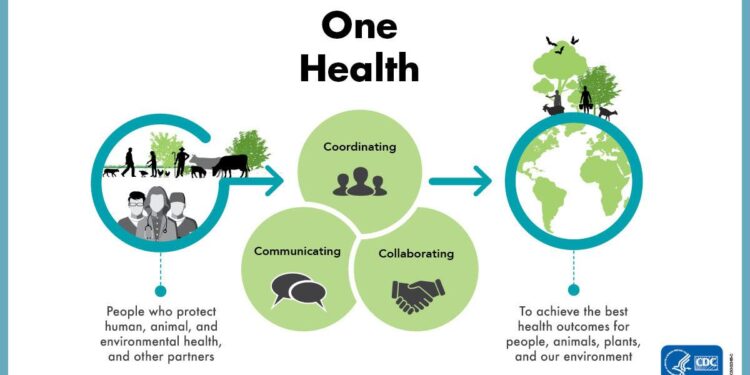A groundbreaking study published in Nature reveals how the One Health approach has been pivotal in detecting and understanding the emergence and spread of Usutu and West Nile viruses in the Netherlands. By integrating expertise across human, animal, and environmental health sectors, researchers have uncovered new insights into the dynamics of these mosquito-borne viruses, highlighting the interconnectedness of ecosystems and the importance of collaborative surveillance in managing emerging infectious diseases. This breakthrough not only sheds light on the changing landscape of viral threats in Europe but also underscores the critical role of multidisciplinary strategies in safeguarding public health.
One Health Approach Reveals Spread Patterns of Usutu and West Nile Viruses in the Netherlands
The collaborative One Health strategy has been instrumental in mapping how Usutu virus and West Nile virus circulate through the Dutch ecosystem. By integrating data from human health, veterinary studies, and environmental surveillance, researchers uncovered critical transmission hotspots across the country’s wetlands and urban green spaces. This holistic approach allowed scientists to pinpoint the role of migratory birds, mosquitoes, and local wildlife in sustaining virus activity throughout the seasons, offering unprecedented insights into the viruses’ dynamic behavior and regional spread.
Key findings highlight the seasonal timing and geographic variation of viral presence, which are essential for public health responses and vector control programs:
- Early summer spikes: Increased mosquito populations coincide with rising viral activity in birds and mammals.
- Urban-rural gradient: Higher virus prevalence detected near city parklands compared to agricultural zones.
- Bird migration influence: Major flyways facilitate northward virus introductions each year.
| Virus | Primary Vector | Peak Activity | Key Hosts |
|---|---|---|---|
| Usutu virus | Culex pipiens | July – August | Passerine birds, corvids |
| West Nile virus | Culex modestus | August – September | Various birds, horses, humans |
Integrated Surveillance Highlights Environmental and Wildlife Factors Driving Virus Emergence
Integrated surveillance combining wildlife monitoring, environmental analysis, and vector tracking has shed new light on the complex interplay of factors driving the emergence of Usutu and West Nile viruses in the Netherlands. This multidisciplinary approach revealed that climatic variations, such as increased temperature and humidity, significantly enhance mosquito vector populations, while shifts in bird migration patterns influence virus amplification and dissemination. Notably, urbanization and changes in land use were pinpointed as critical elements fostering habitats that support virus transmission cycles.
Data from the study underscore several key environmental and wildlife contributors:
- Wetland expansions: Provide ideal breeding grounds for Culex mosquitoes, primary vectors for both viruses.
- Bird species diversity: Acts as a reservoir, with particular species serving as amplifiers of virus spread.
- Temperature anomalies: Prolong the active season of mosquitoes, increasing transmission windows.
| Factor | Impact on Virus Dynamics |
|---|---|
| Urban Green Spaces | Enhanced mosquito habitats and bird congregation |
| Temperature Increase (°C) | +2: Extended transmission season by 4 weeks |
| Bird Migration Delay (days) | 10 days: Increased virus persistence |
Experts Call for Strengthened Cross-Sector Collaboration to Enhance Early Detection and Response
The recent study highlights the critical need for increased synergy between public health, veterinary, and environmental sectors to effectively monitor and manage the circulation of zoonotic viruses like Usutu and West Nile in the Netherlands. Experts emphasize that early detection is significantly enhanced when animal health data, vector surveillance, and human case reporting are integrated into a unified framework. This approach enables timely interventions that can potentially prevent outbreaks before they escalate, reducing the impact on both human and wildlife populations.
Key recommendations from specialists include:
- Real-time data sharing platforms to connect laboratories, wildlife experts, and healthcare providers
- Joint outbreak simulation exercises designed to improve preparedness across sectors
- Enhanced funding mechanisms to support cross-disciplinary research and fieldwork
- Community engagement programs to raise awareness about vector-borne diseases and promote preventive actions
| Sector | Role | Contribution to Early Detection |
|---|---|---|
| Public Health | Disease surveillance & human case management | Clinical reporting & outbreak response |
| Veterinary | Monitoring wildlife and domestic animals | Detecting viral circulation in hosts |
| Environmental | Vector ecology and habitat assessment | Tracking mosquito populations & risk areas |
Insights and Conclusions
The groundbreaking findings detailed in this study underscore the critical importance of the One Health approach in tackling emerging infectious diseases. By integrating human, animal, and environmental health data, researchers have shed new light on the emergence and transmission dynamics of Usutu and West Nile viruses in the Netherlands. As these mosquito-borne viruses continue to pose threats across Europe, such interdisciplinary collaborations will be essential for early detection, effective response, and prevention strategies. This work not only advances scientific understanding but also serves as a timely reminder of the interconnectedness of our ecosystems-and the shared responsibility to safeguard public health.
















